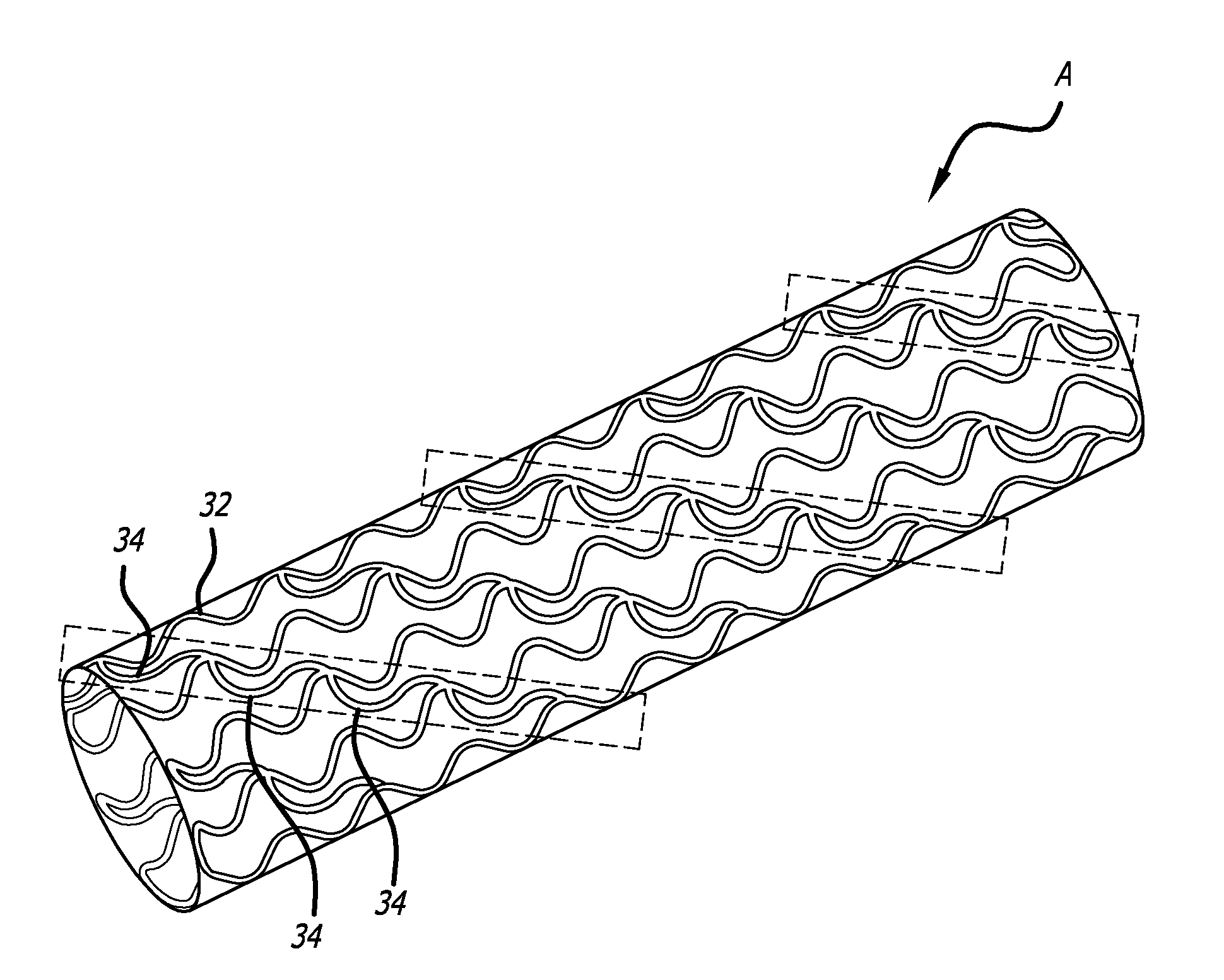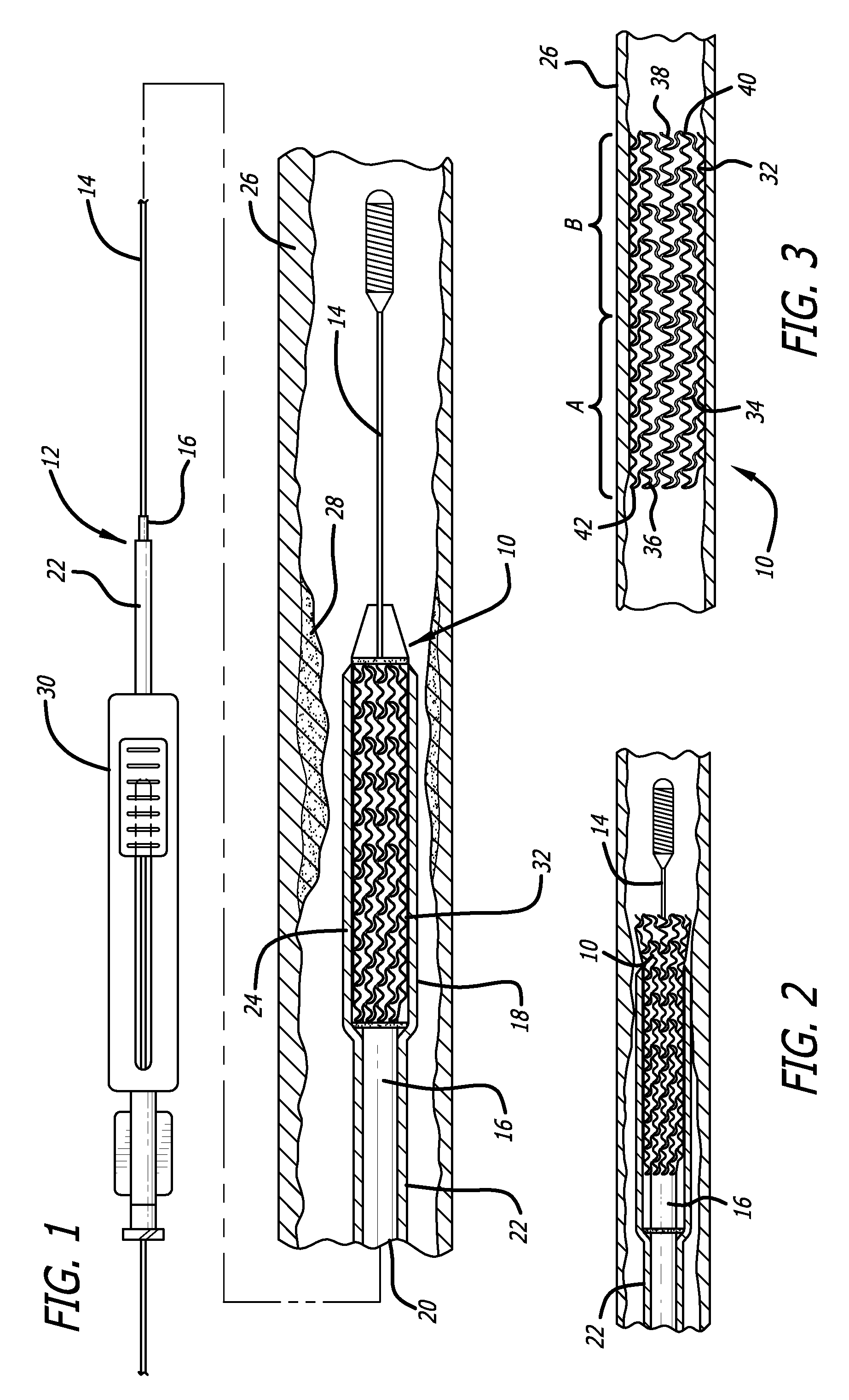Endoprostheses for peripheral arteries and other body vessels
a peripheral artery and endoprosthesis technology, applied in the field of endoprosthesis and intravascular stents, can solve the problems of poor blood flow and circulation, slow healing wounds and ulcers, poor patient comfort, etc., to achieve the effect of maintaining the patency of the body lumen, facilitating delivery, and high degree of fracture and fatigue resistan
- Summary
- Abstract
- Description
- Claims
- Application Information
AI Technical Summary
Benefits of technology
Problems solved by technology
Method used
Image
Examples
Embodiment Construction
[0036]The present invention stent improves on existing stents by providing a longitudinally flexible stent having a uniquely designed pattern which has a high degree of fracture and fatigue resistance when subjected to physiological deformations associated with some body vessels. In addition to providing longitudinal flexibility, the stent of the present invention also provides radial rigidity and a high degree of scaffolding of a vessel wall, such as a peripheral artery.
[0037]Turning to the drawings, FIGS. 1-3 depicts a stent 10 made in accordance with the present invention mounted on a conventional catheter assembly 12 used to deliver the stent 10 and implant it in a body lumen, such as a peripheral artery, a coronary artery or other vessel within the body. The catheter assembly 12 is configured to advance through the patient's vascular system by advancing the catheter assembly 12 over a guide wire 14 using well known methods associated with over-the-wire or rapid-exchange cathete...
PUM
 Login to View More
Login to View More Abstract
Description
Claims
Application Information
 Login to View More
Login to View More - R&D
- Intellectual Property
- Life Sciences
- Materials
- Tech Scout
- Unparalleled Data Quality
- Higher Quality Content
- 60% Fewer Hallucinations
Browse by: Latest US Patents, China's latest patents, Technical Efficacy Thesaurus, Application Domain, Technology Topic, Popular Technical Reports.
© 2025 PatSnap. All rights reserved.Legal|Privacy policy|Modern Slavery Act Transparency Statement|Sitemap|About US| Contact US: help@patsnap.com



